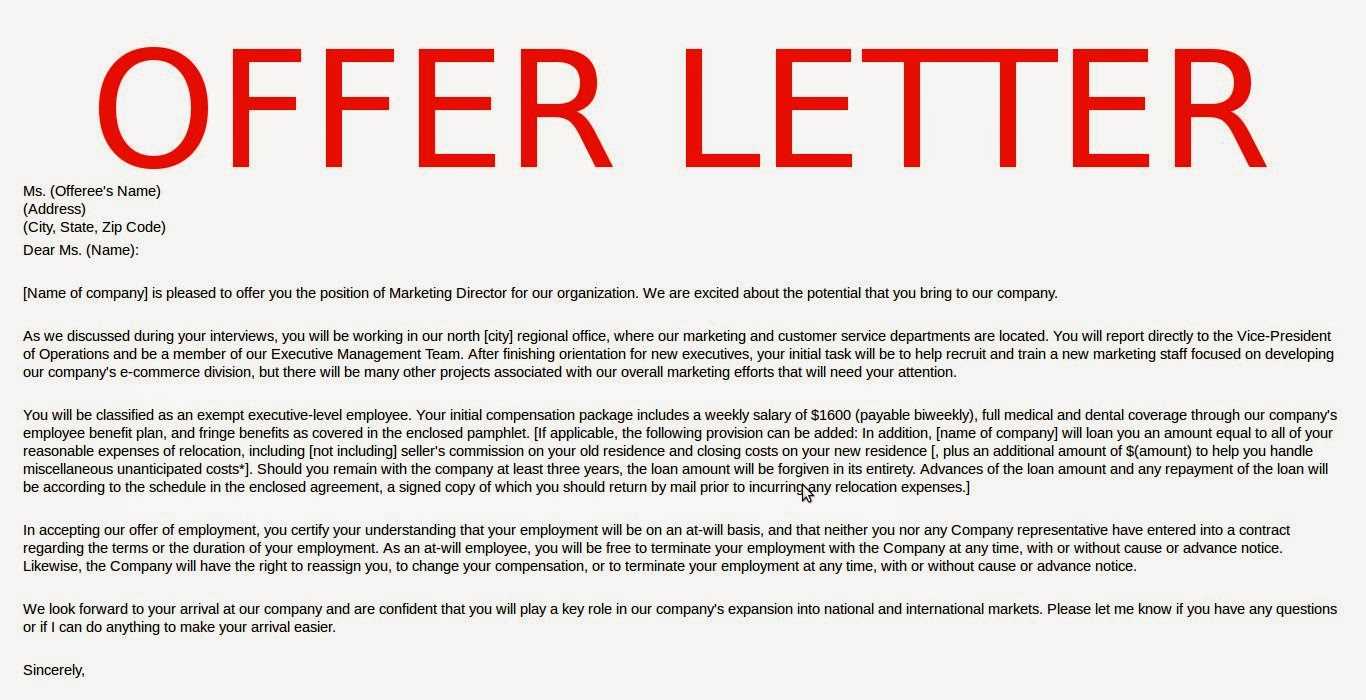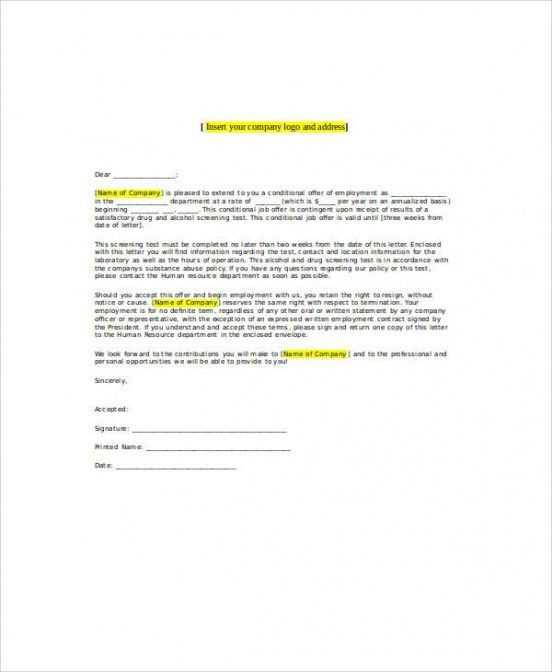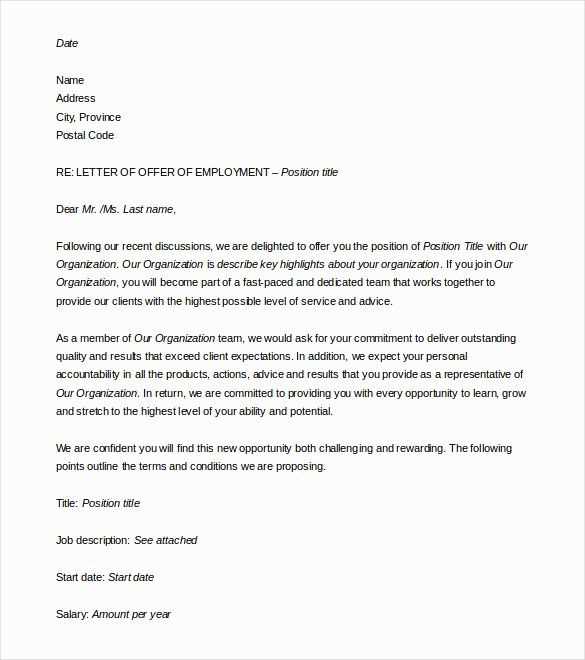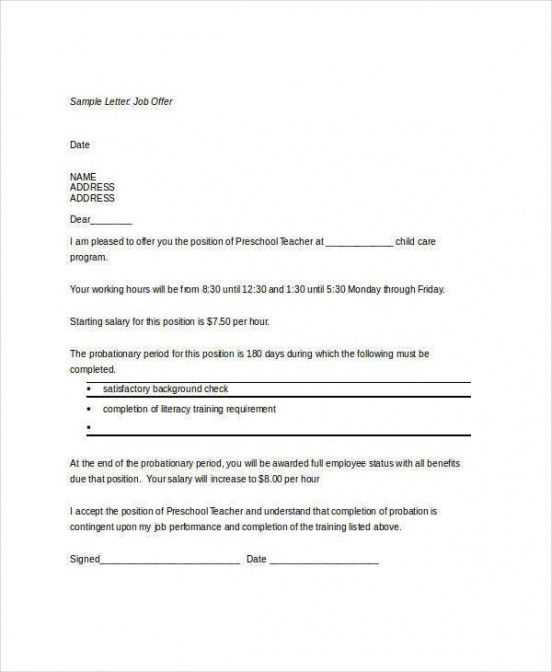Conditional Offer of Employment Letter Template Guide

When hiring a new team member, it is essential to communicate the terms clearly, outlining expectations, responsibilities, and conditions. This document serves as a foundation for establishing mutual understanding and a formal relationship between the employer and the candidate.
Crafting such an agreement requires attention to detail, ensuring that all critical aspects are addressed. From defining start dates to explaining specific requirements, this communication tool helps avoid any misunderstandings that might arise after the hiring process is completed.
Effective communication in this context is key to setting the stage for a successful working relationship. This guide will walk you through the necessary steps and elements to consider when drafting such a document, ensuring you create a clear and comprehensive agreement tailored to both parties’ needs.
Conditional Offer Letter Overview

When finalizing the hiring process, employers often use a document to outline specific terms and conditions that must be met before the official start. This communication provides clarity on the expectations both for the new hire and the organization, ensuring all parties are aligned before entering into a formal work arrangement.
This type of document typically highlights the key points of the agreement, from salary and benefits to the need for background checks or completion of other formalities. It sets the groundwork for a clear transition into a more permanent arrangement once all conditions are fulfilled.
Key Aspects of the Document

The document should include essential details such as the role being offered, expected start date, and any specific conditions that need to be met. These terms are designed to protect both parties and avoid future disputes.
Important Considerations
Employers must ensure they communicate all necessary information, clearly stating any preconditions or requirements the candidate must meet before the final agreement. This helps in avoiding confusion and ensures transparency throughout the process.
| Aspect | Details |
|---|---|
| Position Title | Defines the job role being offered |
| Start Date | Indicates the expected date for beginning employment |
| Conditions | Details any prerequisites for finalizing the agreement, such as background checks or references |
| Salary and Benefits | Outlines compensation package, bonuses, or other benefits |
Key Components of a Conditional Offer
When creating an agreement to finalize a new role, certain essential elements must be included to ensure both the candidate and the organization have clear expectations. These components outline the critical conditions that must be met before the official start, as well as the framework for a successful transition into the role.
Among the most important aspects to address are the specific requirements or criteria that must be fulfilled, such as background checks, drug tests, or document verification. Additionally, details about the role, compensation, and other benefits should be explicitly stated, leaving no room for ambiguity.
By including these key elements, both the employer and the candidate can proceed with a clear understanding of what is expected and what steps need to be taken before formalizing the employment relationship.
How to Write an Effective Letter
Creating a clear and concise document to communicate terms and conditions is essential in establishing a professional relationship with a potential team member. The message should be straightforward, highlighting all the necessary details and requirements for finalizing the hiring process. This ensures both parties understand their roles and obligations before moving forward.
Structure and Clarity
The structure of the document should follow a logical order, beginning with the basic details of the role being offered. Clearly outline the expected start date, compensation, and any preliminary requirements that need to be addressed. Each section should be easy to read and free of unnecessary jargon to avoid confusion.
Tone and Professionalism
Maintaining a professional and respectful tone throughout the message is critical. While the document serves to communicate expectations, it should also reflect the organization’s values and commitment to fair treatment. Ensuring a positive and encouraging tone will help set the right tone for the candidate as they prepare to transition into the role.
Legal Considerations in Conditional Offers
When drafting a document that outlines the terms and conditions before finalizing a work agreement, it is crucial to understand the legal implications involved. These agreements must comply with local labor laws and regulations to avoid disputes and ensure fairness for both parties. Properly addressing legal requirements not only protects the employer but also ensures the rights of the candidate are respected.
Key Legal Aspects to Consider

- Compliance with Local Laws: Ensure the agreement aligns with labor laws in the relevant jurisdiction.
- Clarity of Terms: Clearly state any prerequisites or actions needed before the agreement becomes final.
- Non-Discriminatory Practices: The document should not include any terms that could be seen as discriminatory or unfair to the candidate.
- Confidentiality and Privacy: Address any confidentiality clauses related to sensitive information shared during the hiring process.
Potential Risks and Liabilities
Failure to consider legal factors could lead to potential risks, including disputes over unclear terms, claims of discrimination, or issues with labor compliance. It is recommended to consult with legal professionals to ensure all aspects of the document are legally sound and appropriately tailored to meet the needs of both the organization and the candidate.
Common Mistakes to Avoid
When drafting a document that outlines the terms for finalizing a work arrangement, there are several common mistakes that employers should be aware of. These errors can lead to confusion, legal issues, or misunderstandings, potentially affecting both the candidate and the organization. Being mindful of these pitfalls ensures that the agreement is clear, professional, and legally sound.
Lack of Clarity in Terms
One of the most frequent mistakes is failing to clearly define the conditions that must be met before finalizing the agreement. This can include ambiguous statements about job responsibilities, salary, or other requirements. Ensure that all terms are straightforward and easily understood to prevent confusion later on.
Overlooking Legal Requirements
Another common error is neglecting to check that the document complies with local labor laws and regulations. Failing to do so can result in legal challenges and complications. Make sure to include all necessary clauses regarding non-discrimination, privacy, and any other legal obligations to avoid future risks.
Customizing the Template for Your Needs
Tailoring the document to fit your organization’s unique requirements is an essential step in creating a clear and effective communication piece. Customization ensures that all the necessary details are covered while aligning with the company’s policies, values, and the specific role being offered. By adjusting the content to suit your needs, you make the agreement more personalized and relevant.
Incorporating Role-Specific Information
Each position may come with its own set of conditions or expectations. Customize the document by including specific details related to the job description, required qualifications, and any unique conditions that apply to the role. This ensures that the candidate understands exactly what is expected before formal acceptance.
Adjusting Terms and Conditions
The terms of the agreement can vary based on the organization’s policies, location, or the nature of the work. Whether it’s compensation structure, benefits, or work hours, tailor the document to reflect your specific approach to these key elements. Make sure these adjustments are clear to avoid misunderstandings later on.
Best Practices for Sending the Letter
When it comes to sending the document that outlines the terms of a potential role, it’s crucial to ensure that the process is professional and respectful. The way you deliver the agreement can significantly impact the recipient’s perception of the opportunity and the organization as a whole. Following best practices can help avoid miscommunication and establish a positive tone moving forward.
Ensure that the document is sent through the appropriate channels, whether by email or a formal online portal, and that it is addressed correctly to the right person. Pay attention to the timing of your message, giving the recipient ample time to review and respond before any deadlines. Lastly, consider including a polite follow-up reminder to ensure they’ve received the document and to offer assistance if needed.